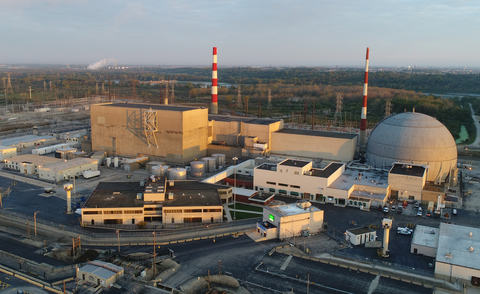Constellation seeks renewal of nuclear license for Illinois’ Dresden Clean Energy Center

Constellation recently filed a license renewal application for its Dresden Clean Energy Center in Morris, Illinois, to extend the nuclear facility’s operating life another 20 years.
“Extending the operating licenses of the nation’s nuclear fleet for an additional 20 years will add more clean megawatts to the grid than all the renewables ever built in this country, and those nuclear plants will continue operating long after the wind and solar facilities under construction today are retired,” Joe Dominguez, president and CEO of Constellation, said.
“Nuclear produces half of America’s clean energy, but many still take it for granted and wrongly assume it will always be there. In reality, Constellation reinvests hundreds of millions of dollars each year in its industry-leading nuclear fleet to keep these massive economic engines running, providing thousands of family-sustaining jobs, preserving energy security and delivering the unmatched reliability we need to grow our economy while addressing the climate crisis,” Dominguez added.
The license will go before the federal Nuclear Regulatory Commission (NRC), which will decide the fate of the facility’s up to 1,845 MW of energy. It would not be the first time the site’s license was renewed. It was last reauthorized in 2004, as part of a series of investments by Constellation. The latest review by the NRC is expected to take several years, but if approved, the extended license would allow Dresden to operate through 2051.
Currently, the site is licensed to operate through 2029 for Unit 2 and 2031 for Unit 3. Already, its life was extended again in 2021 when the Illinois Climate and Equitable Jobs Act (CEJA) passed, ultimately keeping Constellation from retiring it prematurely. This was further aided by the federal nuclear production tax credit in 2022.
Constellation argues that a renewal now would allow Dresden to provide Illinois with an estimated 305 additional terawatt hours over time – more than all of Illinois’ wind and solar facilities produced to date. The site also employs nearly 700 people, and more than double that figure during annual refueling and maintenance outage times.
